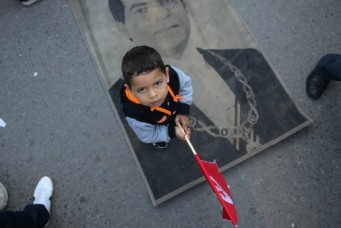The Carthage Agreement Under Scrutiny
Tunisia’s national unity government symbolizes political elites’ willingness to cooperate, but their fragile compromise poses risks to the democratic process.
In summer 2016, President Beji Caid Essebsi oversaw a process to produce a “government of national unity” that would, it was hoped, stabilize Tunisia. This process was formalized in July 2016 through the Carthage Agreement. It had its first tangible effects on July 30, when Prime Minister Habib Essid asked the parliament for a vote of confidence, which failed, leading to his dismissal and replacement by Youssef Chahed. On August 27, Chahed’s new “national unity” government, consisting of 26 ministers and 14 state secretaries, was endorsed in a parliamentary vote by 86 percent of Tunisia’s delegates.
Though the previous government had a parliamentary majority that allowed it to implement wide-ranging reforms, it still opted to create this national unity government, a specific form of power sharing primarily between Nidaa Tounes and Ennahda, the two biggest parliamentary parties. The Carthage Agreement was the culmination of a series of meetings which have occurred between representatives of these two parties since August 2013, indicating that the model of elite compromise is a significant element in Tunisia’s post-2011 transformation. With the creation of the Carthage Agreement, the ad hoc practice of elite compromise has obtained a new, formal foundation. Furthermore, the agreement extended the format to other political parties—including the four parties in the coalition government (Nidaa Tounes, Ennahda, Afek Tounes, and the Free Patriotic Union) and five opposition parties (Machrou Tounes, Al-Moubadara, Al-Joumhouri, Al-Massar, and the People’s Movement)—and three civil society groups—the Tunisian General Labor Union (UGTT), the Tunisian Union for Industry, Trade, and Handicrafts (UTICA), and the Tunisian Union of Agriculture and Fishery (UTAP).
Certainly, the format of the Carthage Agreement has helped manage Tunisia’s critical political predicament. Most important is the political elites’ renewed willingness to compromise, within the party-political elite. This is especially pertinent in terms of a perpetuation of the reconciliation process between pro- and anti-Islamist factions at the institutional level. Together with the many informal discussions that engendered the agreement, this has prevented further polarization of the political landscape, making Tunisia governable at a time of considerable uncertainty.
But there are nonetheless risks attached to elite compromise, chief among them the possible marginalization of broader parliamentary and civil society opposition. This could give rise to undemocratic conditions: without the necessary corrective of oppositional scrutiny and control, political goal setting could become largely devoid of content. Even though the signatories to the Carthage Agreement represent a significant majority of the seats won in the 2014 parliamentary elections, the nine parties in its coalition represent just 32 percent of Tunisia’s eligible voters. Moreover, the new cabinet is dismantling the balance of power established after the 2014 parliamentary elections. The agreement did not provide an explicit role for the opposition, threatening to marginalize them entirely.
Furthermore, the evolution of the agreement, with myriad informal talks between Essebsi and Ennahda head Rachid Ghannouchi outside the established channels of the democratic process, made for a highly personalized decisionmaking process. It has been reported that even Prime Minister Essid initially knew nothing about Essebsi’s initiative until he was suddenly pressured to resign from his position. Although Essid previously refused to give up his position voluntarily, his government was finally replaced in a constitutional manner after he was denied a confidence vote, a first in Tunisia’s history. In this way, the personalized decisionmaking process ultimately had an impact on the resignation of an elected government.
The necessary but difficult consensus building under the auspices of a grand coalition can also lead members to avoid controversial topics—such as the general attitude toward political counterparts, the implementation of economic and development models, the role of Islam and its relation to the state, and transitional justice and a new reconciliation law. Meanwhile, through their compromises, Ennahda and Nidaa Tounes could become increasingly indistinguishable as they opportunistically attempt to strengthen their own integration within the coalition. This loss of a distinctive party identity could alienate both political elites and the party base, creating a dangerous vacuum that could be filled by new forces outside of the formal democratic process.
In addition to these risks to democratic principles, the strategy of “national unity” could be in danger of becoming devoid of meaning—and no longer durable—if it remains on a purely institutional level. The Carthage Agreement established six broad priorities—combatting terrorism; encouraging development, growth, and work; fighting corruption; ordering public finances; decentralization; and increasing government efficiency—but this has created only a vague framework for the new government. Turning these guidelines into concrete laws and implementing the laws already agreed upon are the principal tasks confronting the new government, whose work will also need to help overcome socioeconomic disparities. Social and regional decline must be halted for Tunisians to perceive the abstract principle of “national unity” in their daily lives. Otherwise, the institutional cooperation at the peak of Tunisian politics will retain the unpleasant aftertaste of an elite compromise.
According to its guidelines, one central goal of the new government is to facilitate development, growth, and work in order to overcome the rifts within Tunisian society. This was a core demand of the protest movement before and after 2011. In anticipation of Tunisia 2020—an international investment conference on November 29-30, 2016—the government proposed a five year development plan in June built around attracting private sector investment. But the extent to which this plan constitutes a truly new direction remains uncertain: the government’s growth strategy largely proceeds along the same political and economic guidelines that have defined the Tunisian development model since the 1990s. But if such a development model is intended to achieve greater social, economic, and regional equality, foreign investors must be involved more closely in job creation and technology transfers to facilitate targeted investment in higher-value sectors. In the medium term, this could improve Tunisia’s position in the global value-added chain, helping to overcome its status as a supplier location. Furthermore, in the long term this would stimulate the job market and reduce unemployment, one of the most glaring issues in Tunisian society.
A new law that details a more purposeful regulation of investment could also contribute to the process of decentralization, improving the economically marginalized regions in the south and interior of Tunisia. The new development plan envisions extensive investment in regional infrastructure to reduce disparities between different parts of the country. However, until there is concrete progress in strengthening regional and municipal administrations, the effects of these projects will remain limited. Indeed, Article 14 of the 2014 constitution stipulated a commitment to decentralization, but progress has been sluggish. A central issue is the transfer of power from the national to the regional and municipal level, a process that manifests primarily through greater budget autonomy for these administrative structures. In response to the principles outlined in the constitution, administrative structures have been reshaped, but though a draft law to oversee municipal and regional elections was proposed in October 2015, neither this law nor updates to the broader electoral code have yet been enacted. Indeed, there is already talk of delaying the March 2017 municipal elections (originally planned for October 2016) until 2018. But the election of town and municipal representatives is a crucial prerequisite to improving the negotiating positions of local organizations, especially in marginalized regions. This would constitute a tangible implementation of the spirit behind the Carthage Agreement, making the idea of greater national harmony and unity more perceptible at the local level and in the daily lives of Tunisians.
Developments in these two fields—the economy and decentralization—make abundantly clear that the process of “national integration” envisioned by the Carthage Agreement is reliant on two factors for its success. First, every reform initiative is judged (and, where possible, strengthened) according to its impact on social inequality. Second, however, these separate areas of reform cannot be viewed in isolation but treated as related aspects of a single complex undertaking. Implicit in the Carthage Agreement is the aim of ensuring that Tunisia’s post-2011 transitional process ameliorates social inequality in the spirit of “national unity.” But the coming phase of government must make this goal its overarching principle regardless of ideological divisions, ensuring that it informs all political and departmental considerations and effectively translates them to administrative and legal practices.
In this way, and despite concerns about its impact on the democratic process, the compromise of Tunisia’s elites can make an important contribution. Nevertheless, the interim character of this model of government is key. After all, a central element of a functioning democracy remains the competition of political ideas and their representatives.
This article is reprinted with permission from Sada. It can be accessed online here.
Julius Dihstelhoff and Katrin Sold are researchers and lecturers at the Center for Near and Middle Eastern Studies (CNMS) at the Philipps-University of Marburg, Germany.




